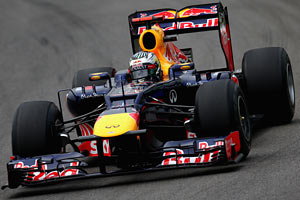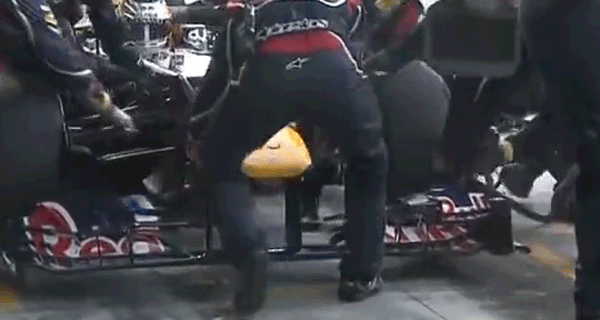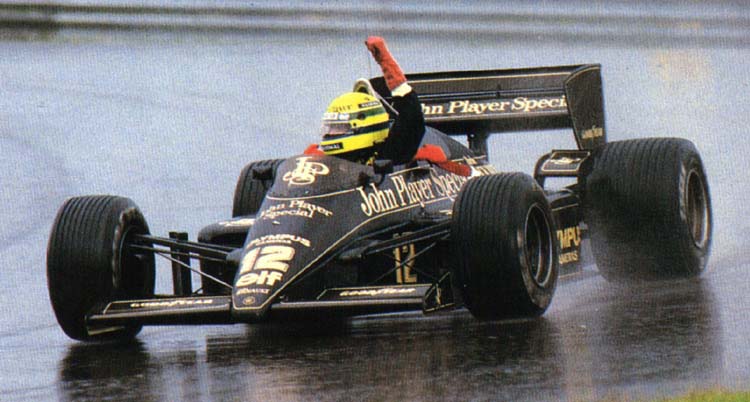I think I have a plausible physical model for it all. In blue I have added a plausible shape for the crash structure inside the wing. It contacts the top skin until point 1 in orange, it lets loose of the skin from there on and in the lower part.
Point 1 in orange is the also the first pivot point for the wing pillars and the main wing assembly thanks to a somewhat flexible (bendable but not stretchable) skin. At relatively low speed the whole thing, including the hollow wing tip, bends downwards and backwards like a pendulum around point 1 due mostly to drag near the end plates pushing them backwards. This increases the angle of attack of the wing allowing it to generate more downforce. This effect accounts for the rotation between the end plates in the figure.
Pivot point 2 in purple (will be somewhat lower) is the flimsy point where the wing pillars meet the main plane. It allows the wing to rotate back into planar (horizontal end plates) at very high speed, driven by downforce generated mostly near the rear part of the end plates. This alleviates the excessive drag of the tilted wing at very high speed.
Other two effects bring the end plates close to the ground for better ground effect: 3) Overall car rake and 4) A cantilever effect of the whole wing assembly as seen from the front (think of Olympic weight lifting). It is effect 4 that brings the end plates in red effectively lower than the end plates in green, and also why more of the wing pillars can be seen in the red version (together with a slightly different camera angle).
An arrangement where points 1 and 2 are exactly on top of each other and the crash structure departs from the outer skin at point 1, together with an adapter that sets the 100Kg of FIA's rams in line with point 2 ensures that FIA's wing flexibility test measures effect 4 and only effect 4, as all the weight is effectively hanging from point 1 and thus from the rigid crash structure. FIA's ram does not activate any of the tilting effects and of course ignores overall car rake.

I guess a more exact version would put point 2 lower and more forward, and point 1 correspondingly more forward so that they stay on top of each other, but these hypothetical pivot points illustrate the point more clearly.
Rivals, not enemies.




